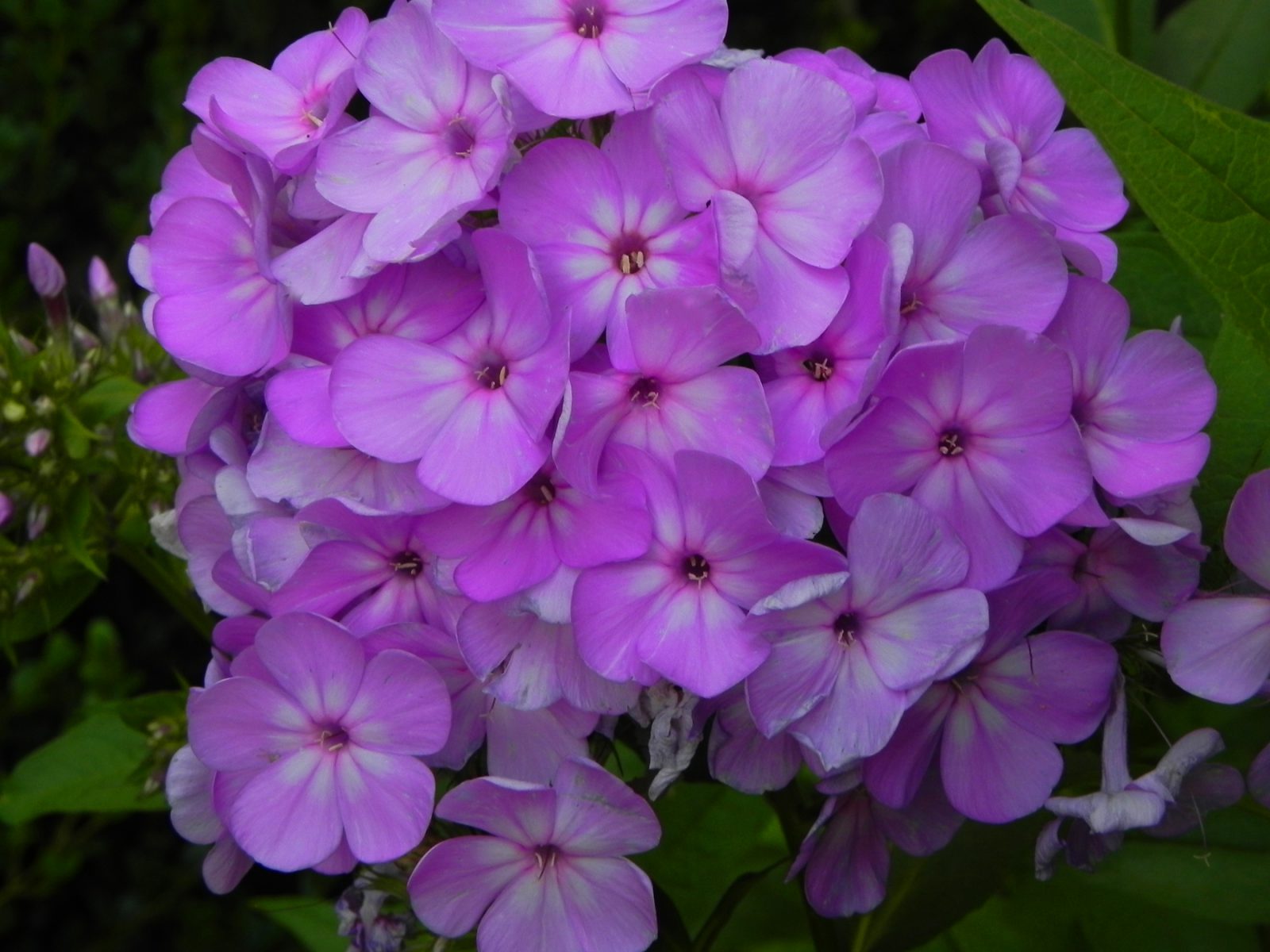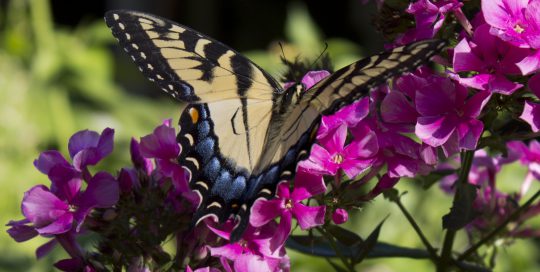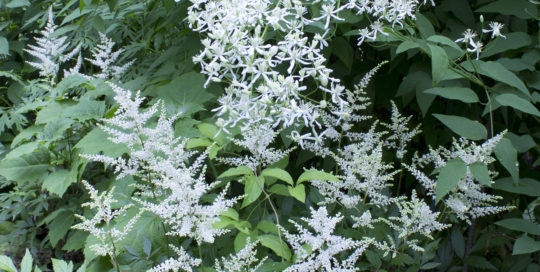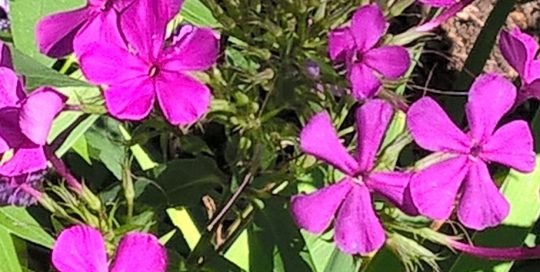Garden Phlox is a great starter plant — one of the easiest for any level of expertise. Another advantage, it puts up with the heat and even a bit of the drought so commonly found in August. With plenty of food and water, it can even thrive in part shade.
In this article Jean Starr offers advice about growing healthy Phlox. She also provides information about the latest varieties, particularly those that are disease resistant.
My grandma called these plants ‘Flux’. She loved them for their fragrance and easy culture. Much later I learned that the correct pronunciation for this old-fashioned, fragrant flower is FLOX, spelled Phlox. It’s one of the easiest names to remember in a world of multisyllabic, scientifically correct plant names.
Grandma expected enthusiasm from me over these late summer, sweet honey smelling flowers. She noted that I loved to breathe in the scent of the peonies she grew, so knew we shared an appreciation of a well-perfumed flowers. But somehow I was not impressed with the spindly stems and washed-out purple florets of her Phlox.
Fast forward 25 years to when I moved into my first house with a yard. I planted tulips, lilies, clematis, cone flowers, peonies, dahlias, and much more in the 15 years I lived there. Not once did I plant Phlox.
Cover Photo by Jean Starr: Phlox ‘Shockwave’ is all about the leaves.
How I Started Growing Phlox
Perhaps I remembered Phlox as a plant with no presence. It was so easy to grow, my Grandma let it cultivate itself on the strip of ground between the sidewalk and the street. On a really hot day, it looked like a patch of weeds. Grandma probably started out with a cultivated variety but let it go to seed, resulting in a mixed bag of colors with varying vigor and an almost guaranteed case of late season mildew.
Eventually I learned it didn’t have to be that way. I collected varieties with beautiful substance and that characteristically honeyed fragrance. The first was Phlox ‘Sandringham’, which is named for Queen Elizabeth’s country estate. It’s doubtful that my local nursery carried this rare variety. ‘Sandringham’ looks very similar to a more common variety called ‘Bright Eyes’. That’s more likely what I grew.
After finally bringing ‘Sandringham / Bright Eyes’ into my garden, I grew a series of varieties named for people, including ‘Laura’, ‘David’, ‘David’s Lavender’, and ‘Norah Leigh’, a plant with variegated leaves. Each year I added more varieties. After all, who can resist a plant called ‘Blushing Shortwood’? Or ‘Maiden America’?
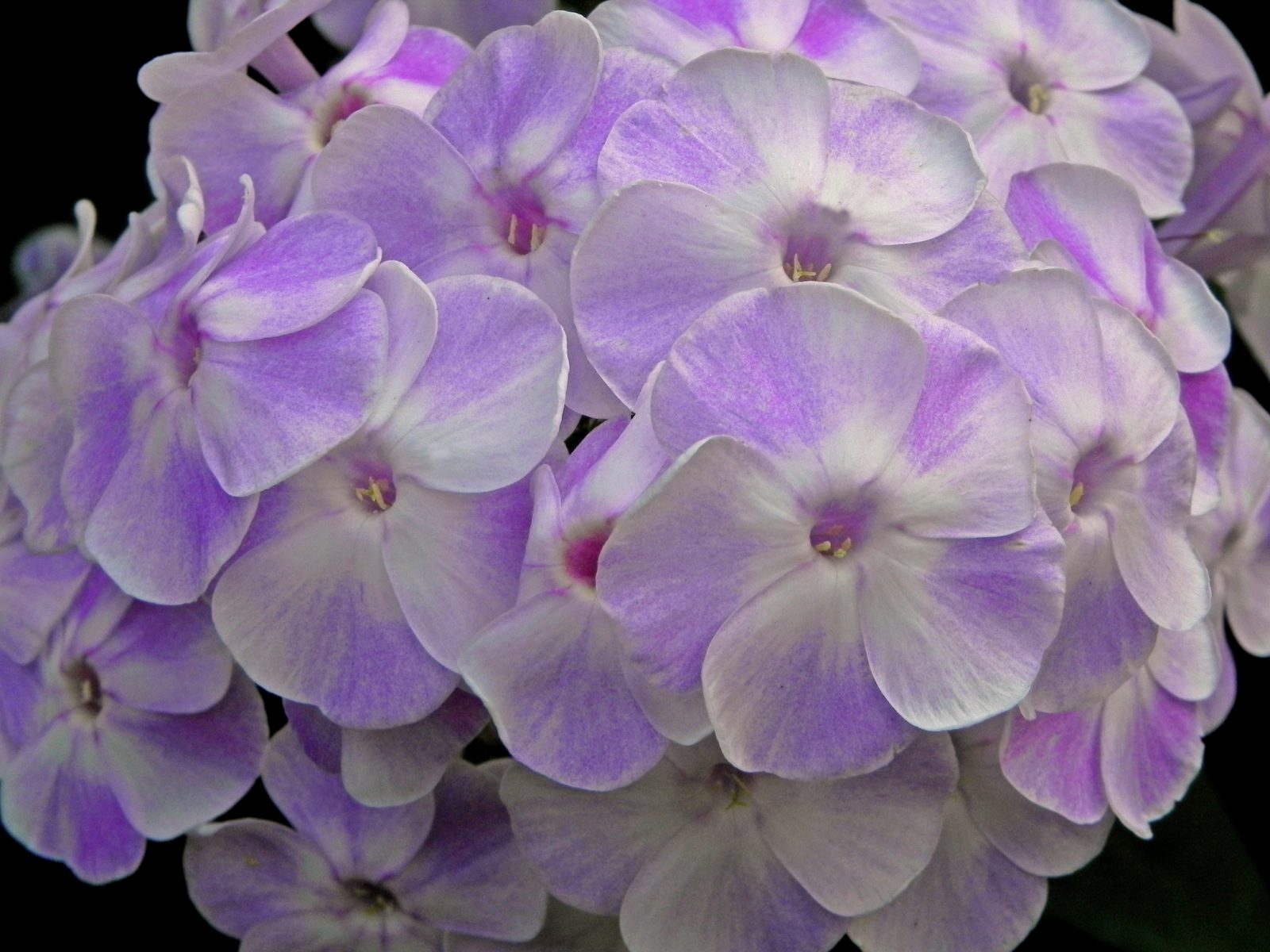
Phlox ‘Blushing Shortwood’ photo by Jean Starr
Butterflies Love Phlox
Another thing that makes summer Phlox even more appealing is the fact that it attracts butterflies. The nectar-laden blooms open just in time for the third and fourth generation of Monarchs. These beauties, along with swallowtails, have become a treasured part of my August garden. Phlox also attracts hummingbirds and dragonflies. I recommend planting multiple Phlox varieties because the more color the better – at least in my garden.
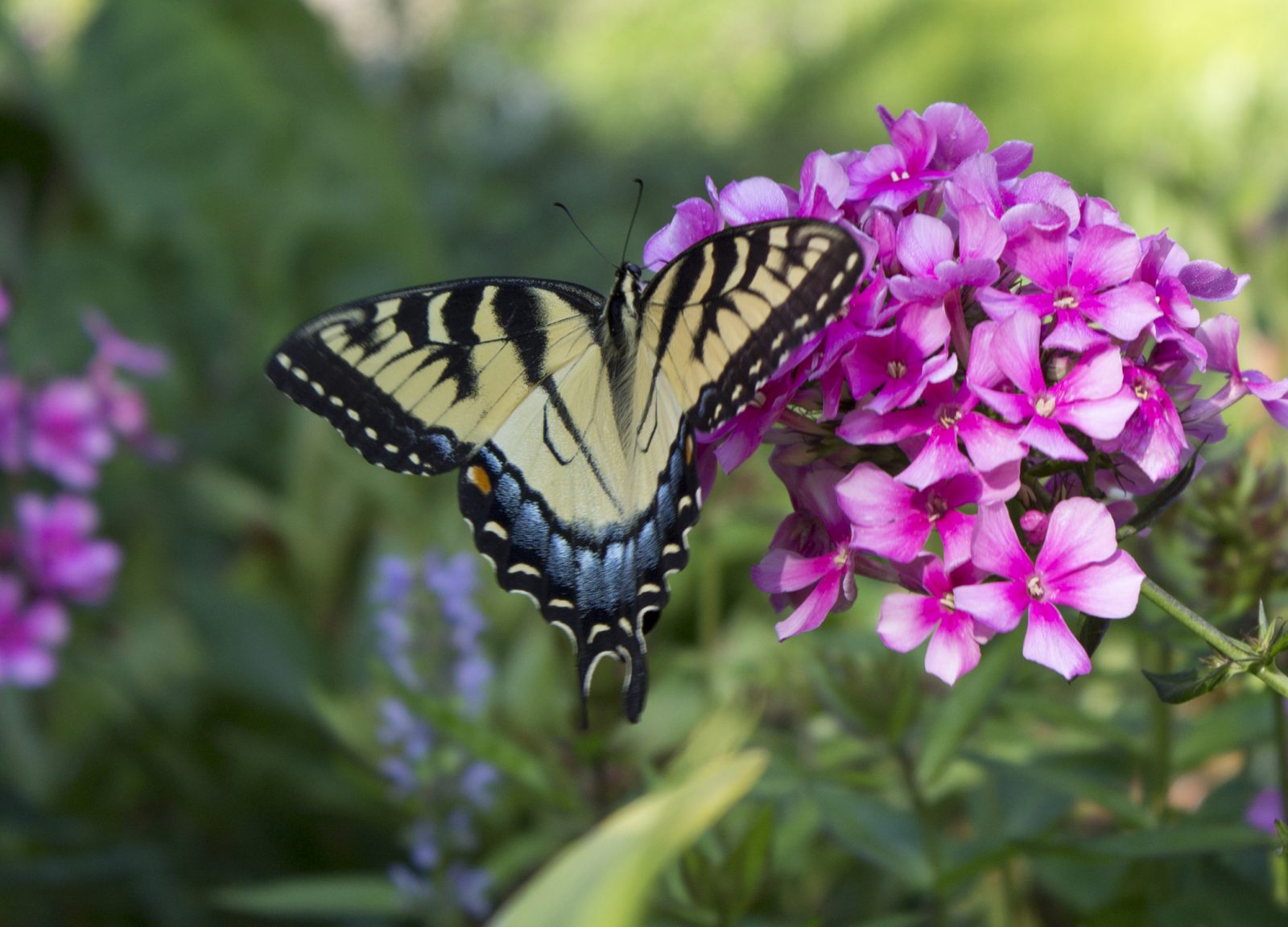
Tiger Swallowtail Butterfly on Phlox ‘Maiden America’ photo by Jean Starr
If you don’t mind a bit of petal drop after cutting, Phlox make fragrant and beautiful bouquets. I suggest picking when just a few of the flowers are open on each panicle. Phlox combines beautifully with coneflowers.
A Short History of Phlox
Even though Phlox paniculata is native to the U.S., it really gained attention from European botanists in the early 1800’s. Commercial growers made selections from seedlings, naming and marketing them to the gardening public. Interest petered out around 1860, however. It peaked again at the start of the 20thcentury when breeders from both Europe and America introduced new cultivars. An American nursery catalog published in 1917, Phlox: A Natural History and Gardener’s Guide by James H. Locklear, offered 584 named selections of tall garden phlox (Phlox paniculata).
Another bout of popularity emerged between the two World Wars, when breeders from England, Germany, and the former Soviet Union introduced new selections of summer Phlox. Locklear writes, “The earlier modern selections of P. paniculata were made during the mid 1900’s in England by Symons-Jeune and Alan Bloom, and in Germany by Georg Arends.
Phlox in all its forms remained popular after WWII, and throughout the 60’s, when Alan Bloom of Bressingham Gardens in England became a top breeder. He introduced varieties still available today, including ‘Frans Schubert’. Present day Phlox paniculata breeding takes place for the most part in The Netherlands and the United States.”
You Can Avoid Phlox Powdery Mildew by Selecting a Resistant Variety
One of the most prevalent issues with summer Phlox is powdery mildew, a fungal disease that typically affects plants that are culturally challenged. Just as the Phlox begins to bloom, its leaves look like they’ve been doused by a diluted white glue.
Today, there are several resistant varieties on the market, including one of the first, ‘David’. Discovered by F.M. Mooberry in the parking lot at the Brandywine Conservancy in Chadd’s Ford, PA, it thrived in the gardens there. In 1987 it was marketed as Phlox ‘David’, named for F.M.’s husband. It was named Perennial Plant of the Year in 2002 by the Perennial Plant Association.
Phlox ‘David’s Lavender’ photo by Jean Starr
Dividing Phlox Helps to Control Powdery Mildew
As I learned from my Grandma, Phlox are some of the easiest perennials to grow. They’re so forgiving about cultural needs, that it’s tempting to just ignore them. However, when blooms seem to have less pizzazz, it may be a sign that the Phlox is in need of division. That occurs about four to five years after planting. Phlox can be divided in either spring or fall. If the division is made in spring, chances are good for a respectable showing that same season. Fall divisions makes sense, too.
For more on dividing Phlox, see Marianne Binetti’s video, How to divide Phlox.
Dividing Phlox on a regular basis helps keep mildew in check. It improves air circulation around the plant. Rachel Kane, founder of Perennial Pleasures Nursery in East Hardwick, Vermont, specializes in Phlox. She has one of the largest collections of Phlox to be found anywhere in the country. After growing more than 100 varieties of summer Phlox, she reports that many of the older varieties have very good disease resistance.
Rachel Kane’s Advice on Growing Healthy Phlox:
- Choose varieties that have good mildew resistance.
- Grow Phlox in a cool location, preferably with shade, and in a humus-rich soil. Their native situation is woodland.
- If planted in full sun, have other plants nearby to keep the soil around the base shaded.
- By all means, water when the weather is dry.
- Reset Phlox every five years in heavily enriched soil (use compost or aged manure).
New Varieties of Phlox Are Brought to Market Most Every Year
There is a resurgence of interest in Summer Phlox (Phlox paniculata). Several new selections debut each season. Breeders look for selections that bloom longer, stand up straighter, and produce more stems and flowers. In the U.S., where mildew is an issue, the new varieties are usually resistant to fungal disease.
When breeders cross two or more species, the resulting plants are commonly referred to as hybrids. Hybrid Phlox bloom earlier than tall garden Phlox, but their height is similar. The hybrids are quite resistant to mildew.
The hybrids bloom early July, right along with Annabelle Hydrangeas and mid-season lilies. The first hybrids were tall — around 30”, but some of the newer varieties, like ‘Kung Fuchsia’ are under two feet tall.
New Varieties of Phlox Make Good Floral Displays
A new series of Phlox bred in the Netherlands is somewhat of an acquired taste. The congested flower heads of the so-called ‘feelings series’ bear shortened, bi-colored petals, giving them the look of a double bloom. All the varieties in the series include the word ‘feelings’ in their titles: ‘Empty Feelings’, Pure, Red, Fancy and ‘Natural Feelings’. The University of Vermont Extension suggests the series was bred for the cut flower market.
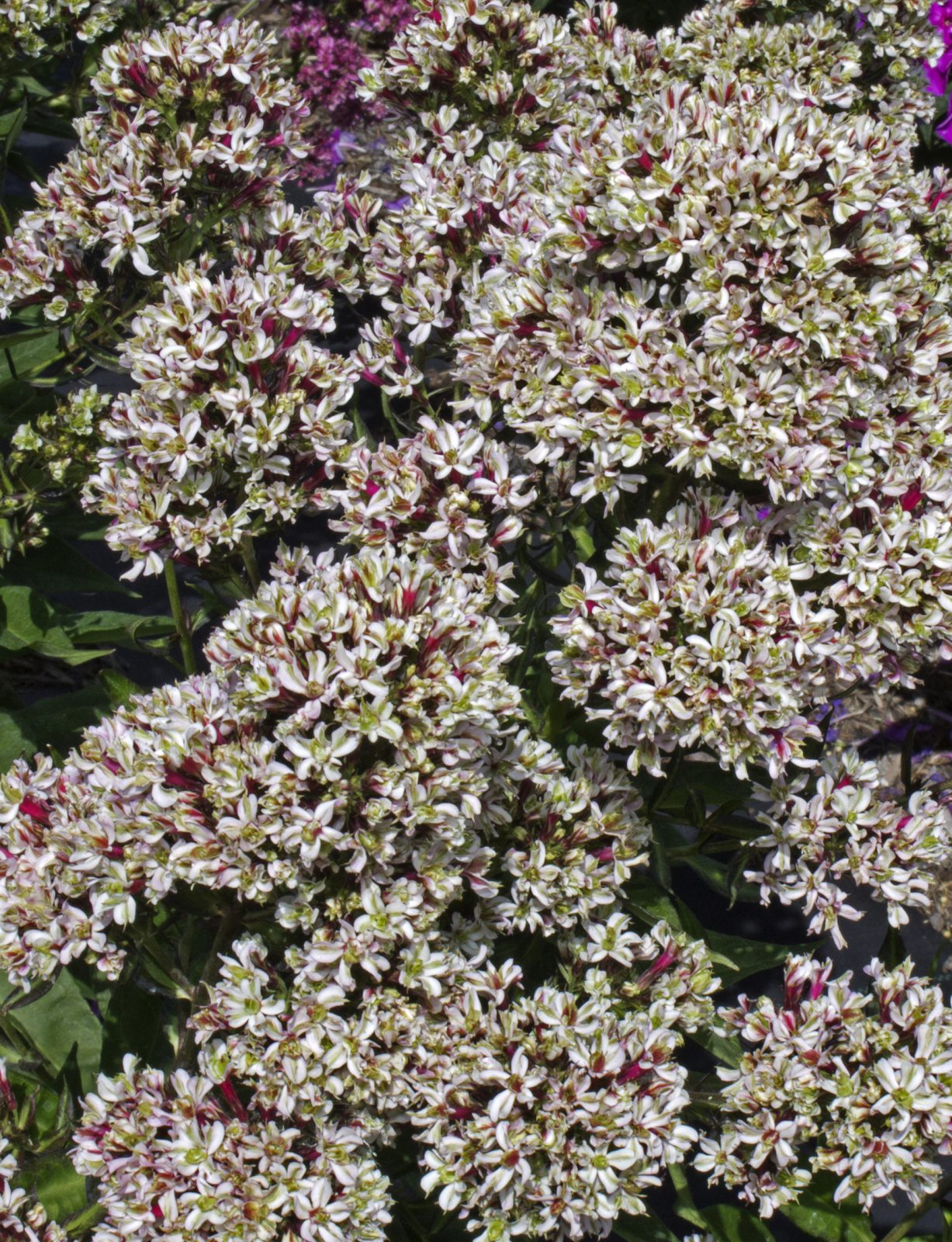
Phlox ‘Pure Feelings’ photo by Jean Starr
In an evaluation of Phlox for the Midwest conducted by the Chicago Botanic Garden from 2001 through 2009, project manager Richard G. Hawke said ‘Fancy Feelings’ provides the best floral display of the group with deep pink, strap-like petals and purple sepals that remained ornamental long after the petals dropped. A two-season comparison study of Phlox for the Mid-Atlantic region conducted at Mt Cuba Center in Hockessin, DE, gives insight into the best-performing varieties.
In Gardening, Vintage Never Goes Out of Style
My Grandma came of age during Prohibition and the Marcel hair wave. She became a grandmother in the housedress and apron era. While modern, uber-colorful Phlox varieties of today aren’t visually much different than those offered 100 years ago, their introduction brings Phlox back into the limelight for a new generation of garden-lovers. Even in gardening, vintage never goes out of style.

